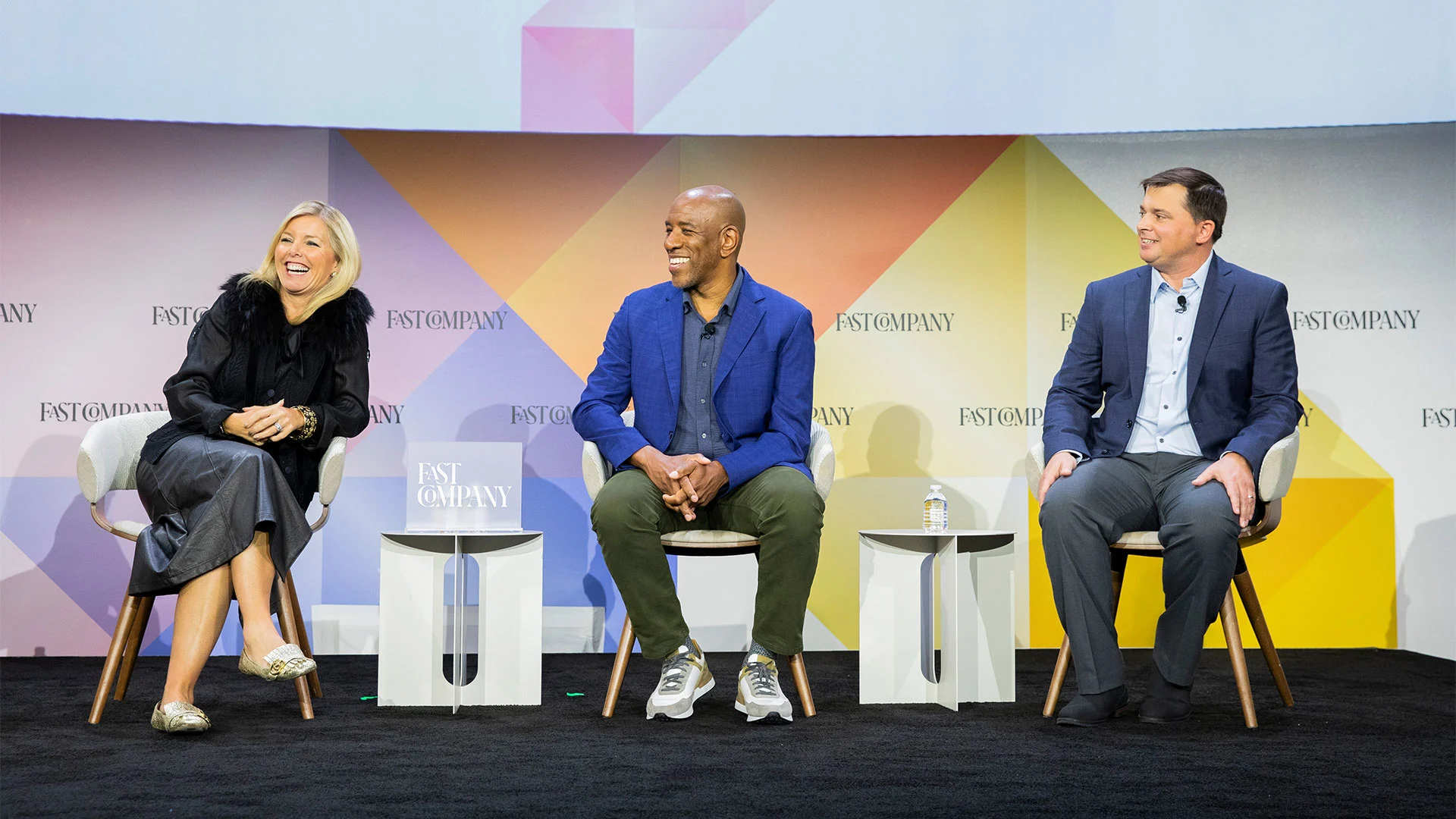Sometimes shoppers don’t know what they really want. Here’s how SharkNinja deals with that problem

Some innovative products are designed to solve a specific pain point for consumers, while others will address a problem they don’t even realize they have.
Take soggy sandwiches, for example. A focus group wouldn’t necessarily highlight the need for a cooler that keeps sandwiches from getting soggy—but once the problem was identified, it helped inform the design of Ninja’s line of FrostVault coolers, according to Michelle Crossan-Matos, the chief growth officer of SharkNinja.
Engineers and inventors are steeped in data that they can then leverage along with insight and empathy, in order to create the wide range of innovative products SharkNinja has become known for, Crossan-Matos said during a panel discussion this week at the Fast Company Innovation Festival in New York.
“It’s the marriage of intuition and data that makes all the difference,” she said.
Subscribe to the Daily newsletter.Fast Company’s trending stories delivered to you every day
Privacy Policy
|
Fast Company Newsletters
Data insights
Sometimes, customer insight causes a company to shift its focus, as was the case for Sunday.
When the company was founded in 2018, the initial goal was to create a non-toxic, natural line of lawn care products, to serve as an alternative to the conventional legacy products. That was before realizing that homeowners didn’t know how to care for their yards, said Brad Smith, the company’s president.
“We learned pretty quickly that it wasn’t just enough to develop a good, solid non-toxic product,” Smith told the audience at the panel. “We also had to invest in relationships with these customers and provide content and personalized guidance to make them successful using our product in their yards.”
Sunday has since expanded how it collects information that will inform its product strategy, including gathering soil samples from customers to be added to its “world’s largest soil database.” That wealth of data also informs an AI tool called Sunny, Smith said: “It’s us engaging and getting very close with the customer and trying to solve their unique problems in their yard.”
For Pinterest, user data also informs the company’s annual Pinterest Predicts report, which has an accuracy rate of about 85% for what trends will be popular in the future, according to Malik Ducard, the company’s chief content officer. By aggregating what users save, pin to boards, or create on the site, that helps inform what people are interested in now—and the biggest trends that have not yet happened, he added.
“Those are the types of signals that we focus the mathematics of our systems on, because what we find is that that then drives higher quality experiences—more about time well spent, than time just simply spent or poorly spent,” Ducard said.
advertisement
Oh, the humanity!
But it’s important to add a human touch in deciding what to do with the insights that data provides.
“The data don’t make the decisions, and the data doesn’t come out of the blue—it’s powered and informed by people,” Ducard said. “Remembering that puts data and intuition less at odds, because ultimately the data goes up to a point and then we need to make a decision.”
Sunday invests heavily in both the data and science necessary to offer a custom prescription for a lawn care solution to its customer. But teams must leave room to be able to constantly make on-the-fly decisions, Smith said: “The world doesn’t wait for data analytics.”
For SharkNinja, spending time with consumers to really understand their needs, pain points, and what problems they encounter with products is also an integral part of the process. At the panel, Crossan-Matos recounted experiences that still give her goosebumps, that highlight specific pain points that the company’s products could solve.
“At every point, we’re iterating and learning,” she said.



